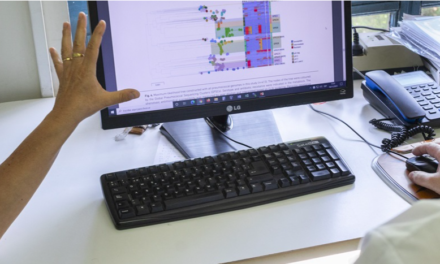
Since mid-October 2023, a concerning surge in respiratory illness among children has been under the close watch of the World Health Organization (WHO). Reports from Chinese surveillance systems have indicated a noticeable uptick in respiratory ailments, triggering alarm among global health authorities.
During a pivotal press conference on November 13, China’s National Health Commission highlighted a nationwide spike in respiratory diseases, primarily impacting children. This surge was linked to the relaxation of COVID-19 restrictions coupled with the onset of colder weather. Identified pathogens responsible for these illnesses include influenza, Mycoplasma pneumoniae, respiratory syncytial virus (RSV), and the notorious SARS-CoV-2, with a greater incidence observed among children.
Concern escalated following reports of unexplained pneumonia clusters in children’s hospitals across Beijing, Liaoning, and other parts of China, prompting the WHO to intervene. The WHO sought detailed epidemiological and clinical data, aiming to discern whether these clusters were standalone events or part of the broader respiratory surge. Collaboration between WHO and Chinese health authorities ensued, shedding light on increased cases of Mycoplasma pneumoniae pneumonia since May 2023 and RSV, adenovirus, and influenza since October 2023, raising earlier-than-anticipated red flags.
However, Chinese health officials reassured the absence of novel pathogens or unusual clinical presentations. They attributed the surge to a general rise in known respiratory illnesses, affirming that hospitals remained within manageable capacities.
To confront this escalating situation, China implemented heightened surveillance measures since mid-October 2023, broadening the spectrum of monitored viruses and bacteria, notably including Mycoplasma pneumoniae for the first time.
Public Health Response and WHO’s Assessment
In response to the mounting cases, China intensified disease surveillance in healthcare facilities and communities while emphasizing the need to bolster the healthcare system’s capacity. The WHO, closely monitoring the situation, remains in constant communication with Chinese authorities, promising continued updates as warranted.
As per the current risk assessment by the WHO, the reported symptoms align with various respiratory diseases caused by known pathogens. Despite the concerning rise, Mycoplasma pneumoniae, a common pediatric pneumonia culprit, is treatable with antimicrobials.
Limited information impedes a comprehensive risk evaluation, but with winter’s arrival, an anticipated surge in respiratory diseases heightens the burden on healthcare facilities, especially with the co-circulation of multiple viruses.
WHO Recommendations and Advice
In light of the situation, the WHO recommends several measures for people in China, including vaccinations against influenza, COVID-19, and other relevant pathogens, maintaining distance from the sick, staying home if unwell, regular handwashing, proper ventilation, and appropriate mask usage.
However, no specific travel advisories for China have been issued by the WHO. Travelers exhibiting respiratory symptoms are advised to seek medical attention and disclose their travel history.
Regarding the Outbreak of Respiratory Diseases in China
Recently, respiratory diseases have been occurring frequently in China. According to the Beijing Municipal Government (Center for Disease Prevention and Control), the number of reported cases of “statutory communicable diseases” in Beijing is as follows, and the top “statutory communicable disease” is seasonal influenza.
6-12 Nov 2023 : 14 744 cases
13-19 Nov 2023: 37 293 cases
20-26 Nov 2023: 72 475 cases
According to the Chinese authorities (National Health Commission), respiratory diseases are caused by known pathogens, mainly influenza viruses, but the main pathogens differ depending on the age group, as shown below.
1-4 years old: Influenza virus, nasal virus
5-14 years old: Influenza virus, _Mycoplasma_, adenovirus
15-59 years old: Influenza virus, rhinovirus, new coronavirus
Over 60 years old: Influenza virus, human metapneumovirus, common coronavirus
Winter’s propensity for respiratory diseases necessitates vigilance among residents, emphasizing preventive measures like mask-wearing, hand hygiene, and vaccination against influenza, particularly for children showing cold-like symptoms.
The situation in China remains under intense scrutiny by global health authorities as efforts persist to contain and understand the escalating respiratory illness outbreak among children.











